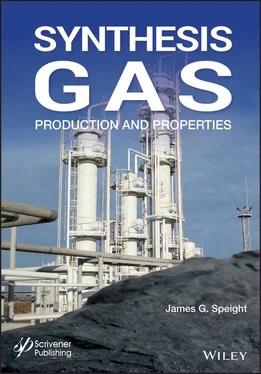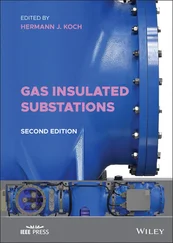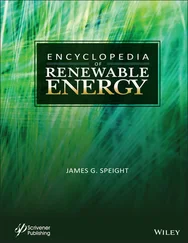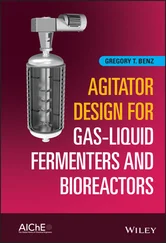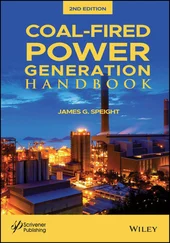However caution is advised when using mixed feedstocks for gasification or, for that matter, for any conversion process. It has been the method in the past (and even continued to be the method in some cases) to assess the properties of the mixed feedstock by calculating an average value for one or more of the properties of the mixed feedstock. This is a dangerous practice because it ignores the potential for interaction of the contents of each feedstock that can cause changes in the chemistry of the process as well as a loss of process efficiency.
One approach to avoid a significant decrease in conversion efficiency is to develop a formulation of mixed feedstocks in order to produce a more consistent material. Formulation combines various preprocessed resources and/or additives to produce a feedstock that provides process consistency.
Feedstock formulation is not a new concept and has been used for decades by the coal industry. For example, different grades of coal are blended for power generation to reduce the sulfur content and the nitrogen content of the feedstock. In the current context, biomass blending feedstocks refers to the combination of multiple sources of the same biomass resource to average out compositional and moisture variations, whereas aggregation refers to the combination of different raw or preprocessed biomass resources to produce a single, consistent feedstock with desirable properties. Examples include mixing blended corn stover with blended switchgrass; mixing blended wheat straw with blended softwood residuals; and mixing blended Miscanthus with blended rice hulls. This strategy allows the desirable characteristics of many types of feedstocks to be combined to achieve a better feedstock than any of the feedstocks alone (Shi et al. , 2013; Lu and Berge, 2014).
Examples to emphasize the above considerations are presented below and relate to (i) the gasification of biomass and coal, (ii) the gasification of biomass and municipal solid waste.
The gasification of biomass and coal ( Chapter 4, Chapter 6) blends is of considerable current interest because of the reduction of the usual high yield of tar products that result from biomass gasification. Various operations involved in the biomass-coal-gasification process such as the typically high moisture-content biomass is usually not just dried, but also subject to torrefaction which involves heating to temperatures typically ranging between 200 and 320 oC 390 to 610 oF) in the absence of oxygen, at which point the biomass undergoes a mild form of pyrolysis) and possibly compacted – this improves the quality as a feedstock for the process. Also, size reduction of both the biomass and the coal to uniformly sized particles is required for optimum gasification.
The product gas compositions are influenced by both the type of biomass co-gasified, as well as its proportion in the feed mixture. Generally, higher H 2content results from greater biomass inclusion; in particular, lignin in woody biomass seems to boost H 2yield in syngas. A wide range of proportions of coal and biomass may be possible for given applications, but the optimum is a complex function of the type of coal used, type(s) of biomass, gasifier type and operating conditions, desired syngas composition, etc., not to mention the available quantities of the biomass which may be considerably less than the coal available.
Furthermore, the cleanup of synthesis gas derived from mixed feedstocks may be more complicated than for gasification or of the individual feedstocks because the species present in each raw feedstock as well as those (environmentally unfriendly) species that are present in elevated amounts from, say, biomass gasification (such as tars and alkalis) may need to be addressed.
2.3.8.2 Biomass and Municipal Solid Waste
The gasification of biomass and municipal solid waste differ in many ways from the gasification of crude oil coke or conversion of natural gas to synthesis gas. While the gasification technologies used with biomass ( Chapter 6) or municipal or municipal solid waste ( Chapter 7) are relatively straightforward, performance depends greatly on the unique characteristics of the feedstock. These feedstocks have much higher moisture content and less heating value by volume than coal. In addition, the non-uniformity of the feedstocks and the variability of the specific compositions over time require flexible and robust gasifiers.
Co-gasification technology varies, being usually site specific and feedstock dependent. In fact, biomass and municipal solid waste feedstocks are highly variable feedstocks that present issues for feed systems as these feedstocks are largely heterogeneous in their delivered state. Some biomass, such as sawdust from lumber mills, can be in a condition suitable for many existing feed systems most municipal solid wastes require extensive preparation or feed system customization. Biomass and municipal solid waste may also have characteristics such as higher moisture content which may necessitate pre-gasification drying. The mineral matter content of each feedstock can also vary widely and the gasifier must be able to handle variable (even high) levels of mineral matter and the ensuing ash.
At the largest scale, the plant may include the well-proven fixed-bed and entrained-flow gasification processes. At smaller scales, emphasis is placed on technologies which appear closest to commercial operation. Pyrolysis and other advanced thermal conversion processes are included where power generation is practical using the on-site feedstock produced. However, the needs to be addressed are (i) core fuel handling and gasification/ pyrolysis technologies, (ii) fuel gas clean-up, and (iii) conversion of fuel gas to electric power (Ricketts et al. , 2002).
2.4 Influence of Feedstock Quality
The influence of physical process parameters and the effect of feedstock type on gasification include, for example, the fact that the reactivity of coal generally decreases with increase in rank (from lignite to subbituminous coal to bituminous coal anthracite). Furthermore, the smaller the particle size, the more contact area between the coal and the reaction gases, leading to a more rapid reaction. For medium-rank coal and low-rank coal, reactivity increases with an increase in pore volume and surface area, but for coal having a carbon content greater than 85% w/w these factors have no effect on reactivity. In fact, in high-rank coal, pore sizes are so small that the reaction is diffusion controlled. Other feedstocks (such as crude oil residua and biomass) are so variable that gasification behavior and products vary over a wide range. The volatile matter produced during the thermal reactions varies widely and the ease with which tar products are formed as part of the gaseous products makes gas cleanup more difficult.
The mineral matter content of the feedstock also has an impact on the composition of the produced synthesis gas. Gasifiers may be designed to remove the produced ash in solid or liquid (slag) form. In fluidized or fixed-bed gasifiers, the ash is typically removed as a solid, which limits operational temperatures in the gasifier to well below the ash melting point. In other designs, particularly slagging gasifiers, the operational temperatures are designed to be above the ash melting temperature. The selection of the most appropriate gasifier is often dependent on the melting temperature and/or the softening temperature of the ash and the feedstock which is to be used at the facility.
Gasification reactors are very susceptible to ash production and properties. Ash can cause a variety of problems particularly in up or downdraught gasifiers. Slagging or clinker formation in the reactor, caused by melting and agglomeration of ashes, at the best will greatly add to the difficulty of gasifier operation. If no special measures are taken, slagging can lead to excessive tar formation and/or complete blocking of the reactor. A worst case is the possibility of air-channeling which can lead to a risk of explosion, especially in updraft gasifiers. Whether or not slagging occurs depends on the ash content of the fuel, the melting characteristics of the ash, and the temperature pattern allowed by gasifier design. Local high temperatures in voids in the fuel bed in the oxidation zone, caused by bridging in the bed, may cause slagging even using fuels with a high ash melting temperature.
Читать дальше
